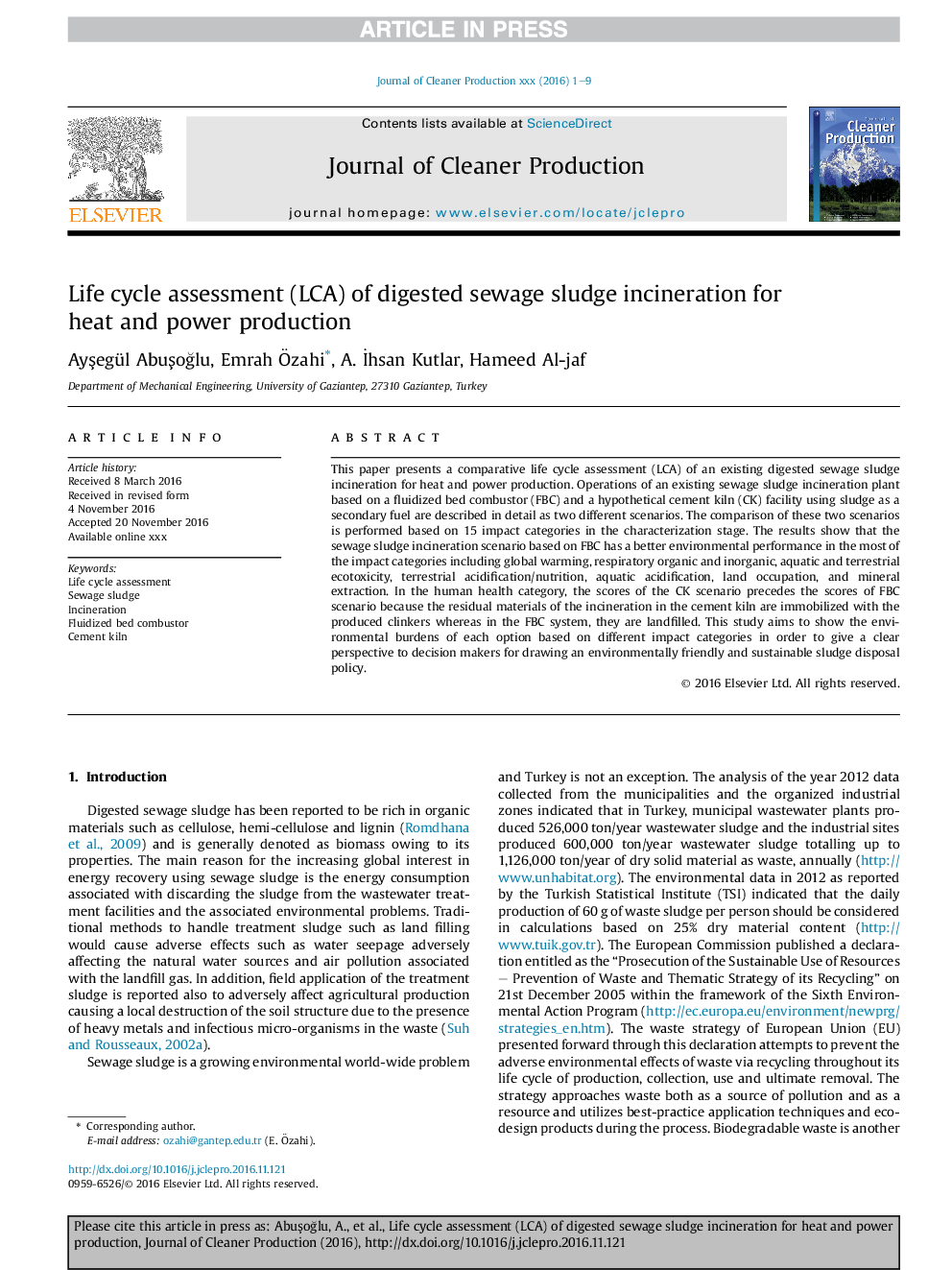| Article ID | Journal | Published Year | Pages | File Type |
|---|---|---|---|---|
| 5480343 | Journal of Cleaner Production | 2017 | 9 Pages |
Abstract
This paper presents a comparative life cycle assessment (LCA) of an existing digested sewage sludge incineration for heat and power production. Operations of an existing sewage sludge incineration plant based on a fluidized bed combustor (FBC) and a hypothetical cement kiln (CK) facility using sludge as a secondary fuel are described in detail as two different scenarios. The comparison of these two scenarios is performed based on 15 impact categories in the characterization stage. The results show that the sewage sludge incineration scenario based on FBC has a better environmental performance in the most of the impact categories including global warming, respiratory organic and inorganic, aquatic and terrestrial ecotoxicity, terrestrial acidification/nutrition, aquatic acidification, land occupation, and mineral extraction. In the human health category, the scores of the CK scenario precedes the scores of FBC scenario because the residual materials of the incineration in the cement kiln are immobilized with the produced clinkers whereas in the FBC system, they are landfilled. This study aims to show the environmental burdens of each option based on different impact categories in order to give a clear perspective to decision makers for drawing an environmentally friendly and sustainable sludge disposal policy.
Related Topics
Physical Sciences and Engineering
Energy
Renewable Energy, Sustainability and the Environment
Authors
AyÅegül AbuÅoÄlu, Emrah Ãzahi, A. Ä°hsan Kutlar, Hameed Al-jaf,
